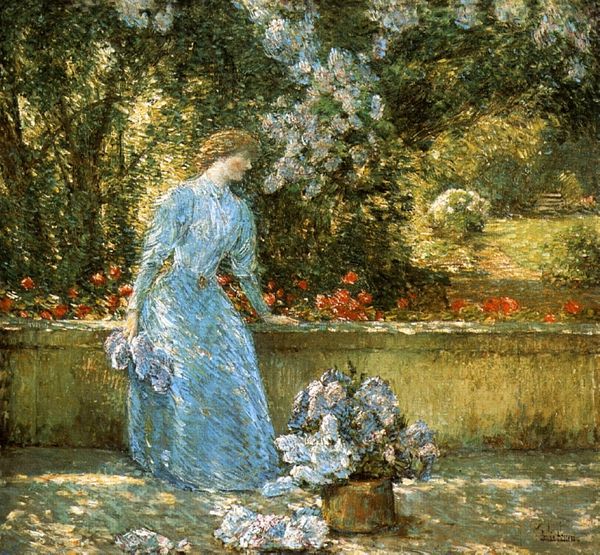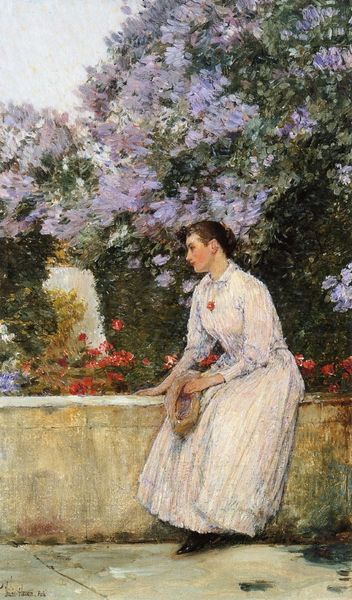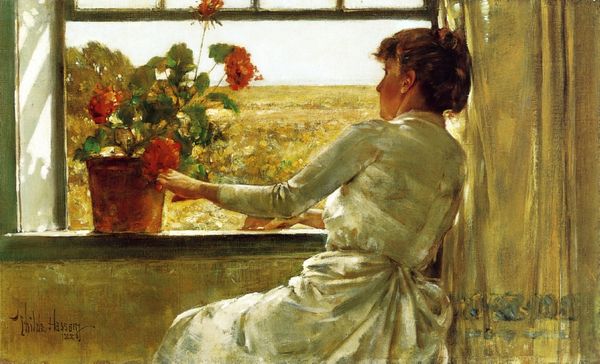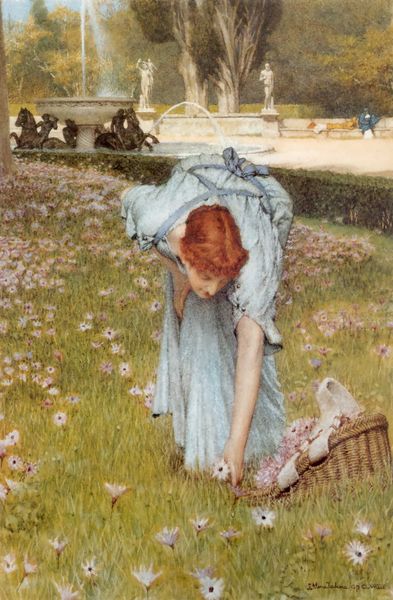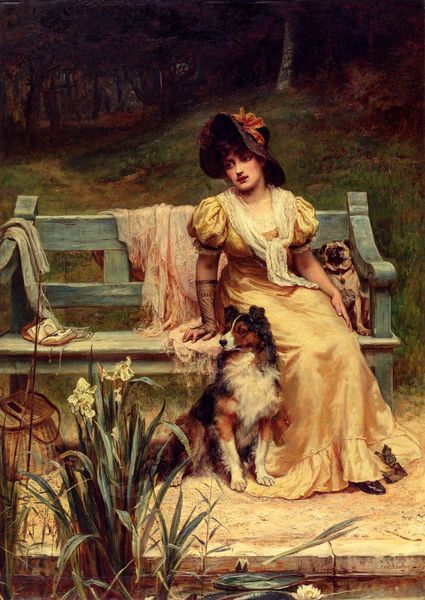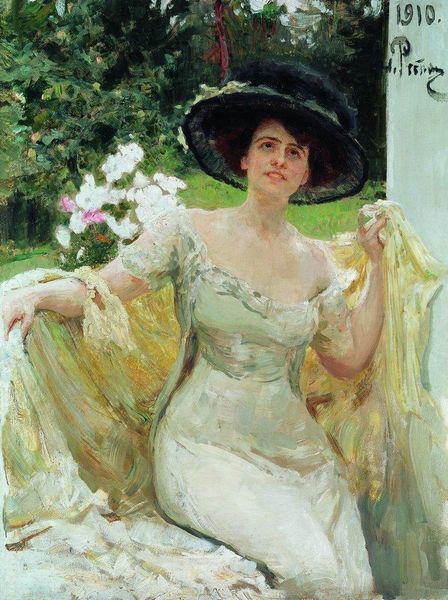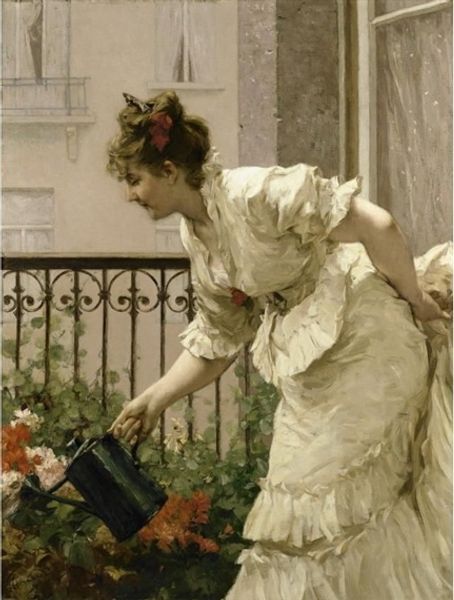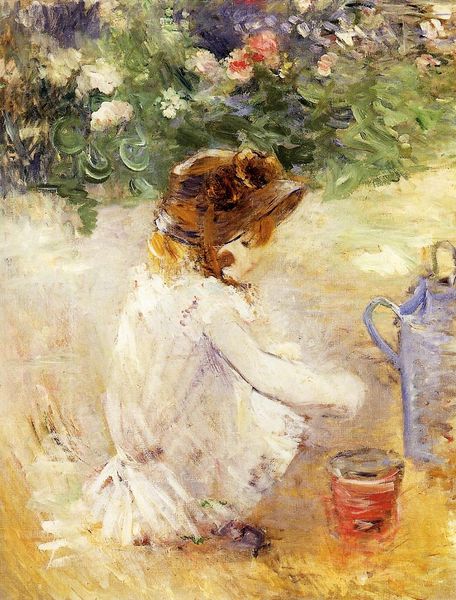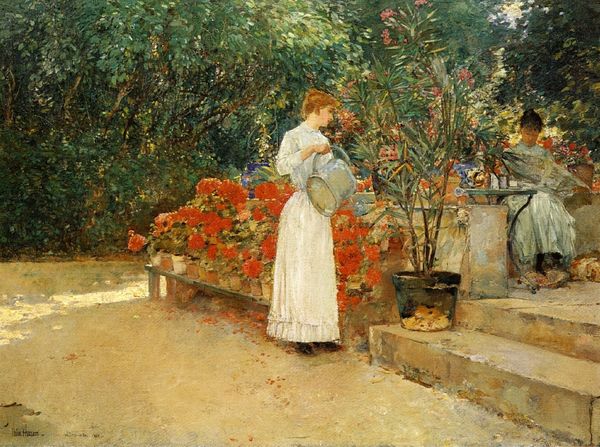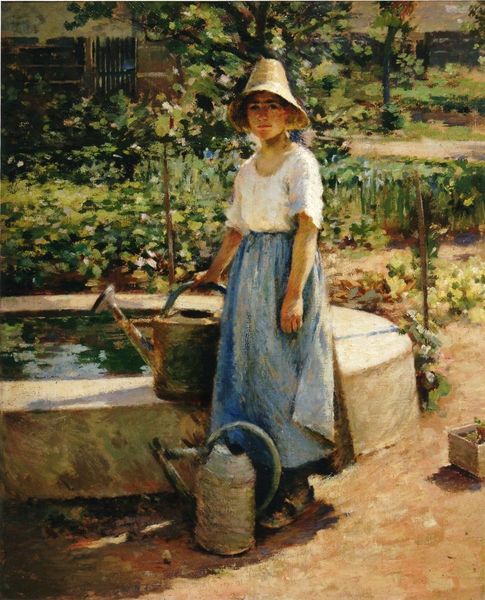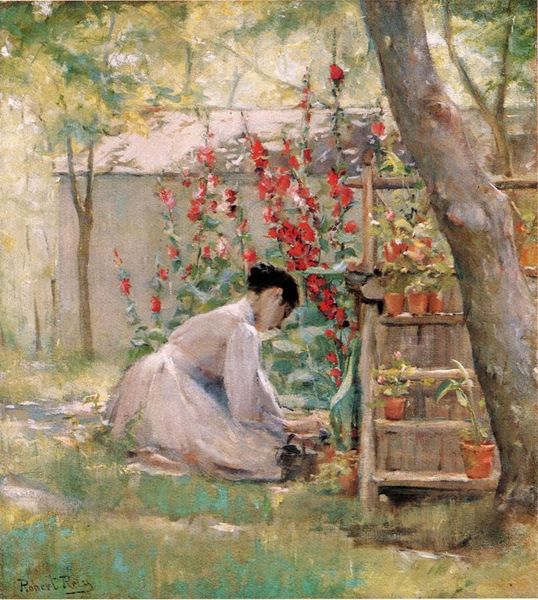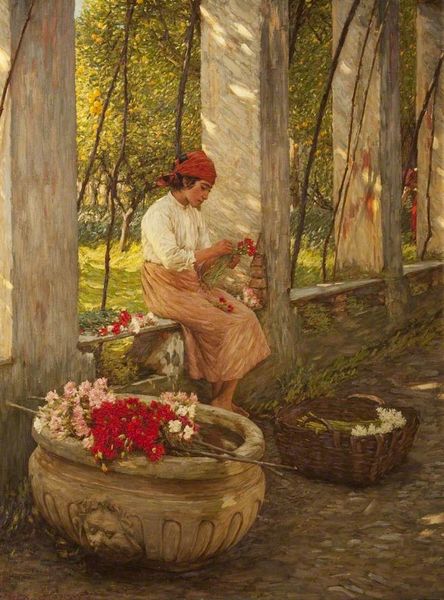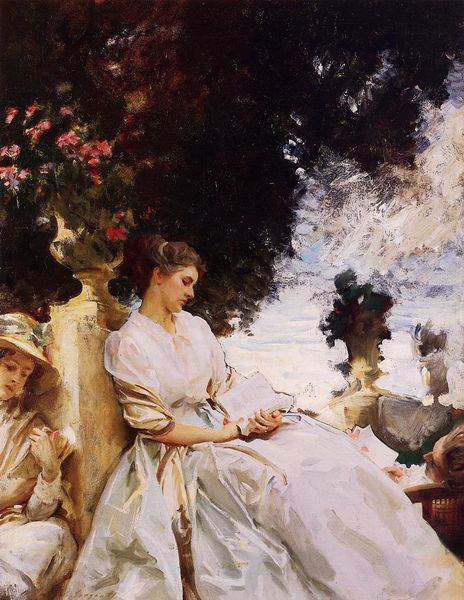
Copyright: Public domain
Curator: Afternoon in the Park, painted by Alfred Stevens in 1885, is rendered with oil paints in a loose, plein-air style. It captures a fashionable lady in a park setting, and it immediately strikes me with its delicate textures. What draws your eye when you see this work? Editor: I notice how her elaborate dress seems to spill out of the frame, taking up a large part of the composition. It makes me think about fashion, wealth and leisure. How would you interpret the significance of the material choices made by the artist? Curator: Well, think about it – the very act of painting outdoors, en plein air, reflects changing modes of production. Ready-made paints in tubes, became widely available and more affordable, shifting painting away from the studio and into everyday life. The woman's elaborate dress, the kind of fabrics used, how they were made, the access she has, and can show that she is leisurely passing the time, connects it with broader changes in Parisian society, where the burgeoning bourgeoisie actively performed its status through fashion. Editor: That’s an interesting idea; to see her dress as a material manifestation of social standing! It’s like she is wearing her class position for everyone to see. How do you feel this choice of location plays into his overall materialist approach? Curator: Consider how public parks themselves were being designed and regulated at this time. Access to and the use of this manicured, social space become indicators of belonging, dictating social norms, a stage of the society in itself. Stevens is very deliberate in placing her within that context, showing the access she has to social spaces, while also reminding us, by means of dress, who that access is exclusive to. The umbrella sitting unopened is a detail, in that she can enjoy a clear afternoon outside. Are there any specific objects that cause such a stir within you, and make you ask why that certain object made it to canvas? Editor: Seeing the newspapers on the bench like that seems pointed, like they were discarded just before her arrival, like another material clue…it hints at a social narrative doesn't it? I learned to appreciate the layers of the social context the artist presents, as the class standing is portrayed through garments, and leisurely acts! Curator: Absolutely! It’s like we've deciphered another coded narrative, framed within the reality of material culture.
Comments
No comments
Be the first to comment and join the conversation on the ultimate creative platform.
